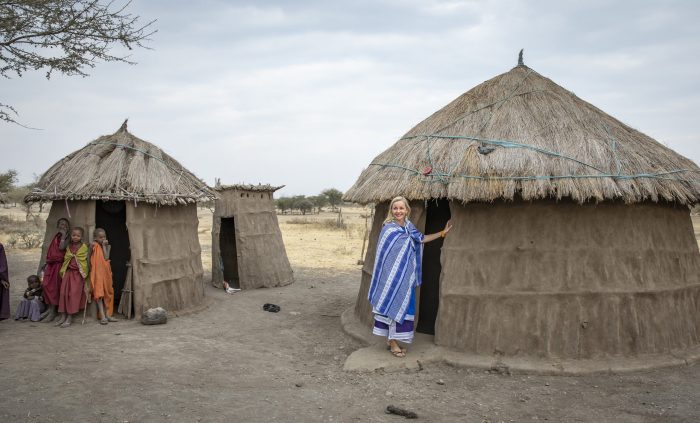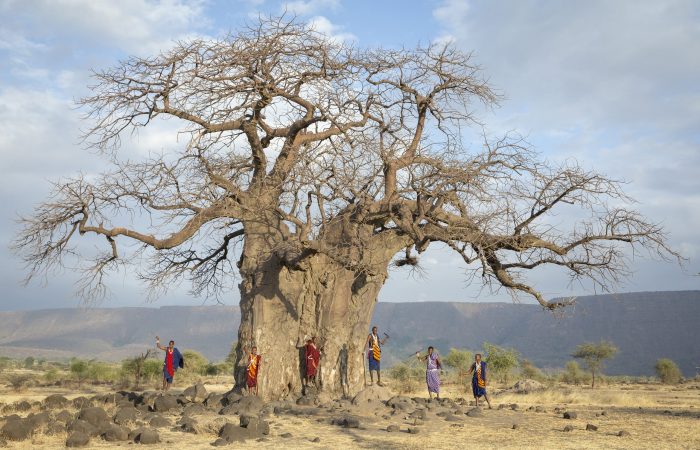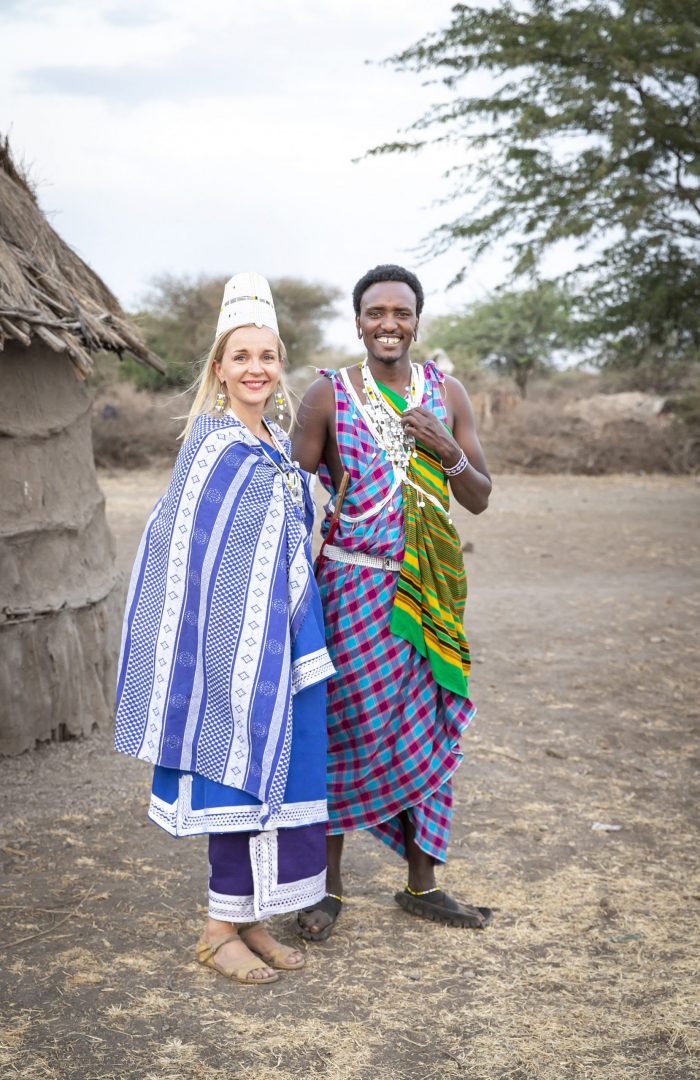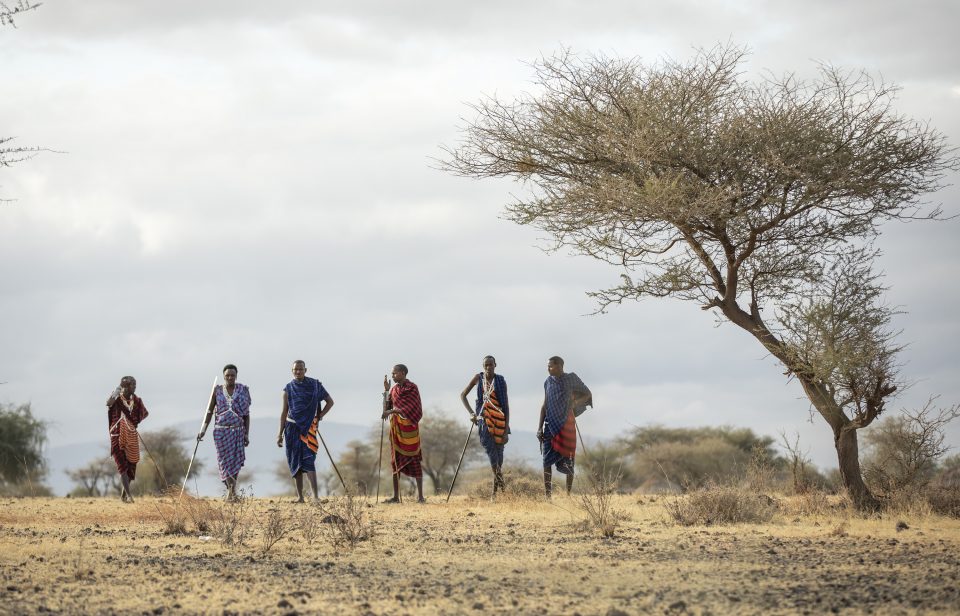When you get curious about other cultures, what are the best ways to explore them? Some of us book a flight, keen for a first-hand experience. Others turn to study, maybe anthropology or indigenous studies at university.
Some, like Anniina Sandberg, an adventurous traveller from Helsinki, completed her African studies at the University of Helsinki and then took her passion a little further. She not only travelled to Tanzania to meet the Maasai people in Africa but ended up living there for nine months.
Motivated to learn more about the Swahili language, the Maasai culture, and their Maa language, this ambitious, inspired woman left the comforts of home and put her studies on hold. Nine months later – mission accomplished. She was speaking Swahili fluently and also learned to speak another Maasai language, the Maa language.
“The experience of living with the Maasai changed my life. It was a real turning point for me,” she explained. “When I returned home, I missed my daily African life. I missed the remote savanna, and I missed the communal feeling and wonderful sense of togetherness you experience joining in the spirit of daily village life activities.” She continued, “I realised my happiness came from these experiences, living among the indigenous peoples. A life that is simple but so rich. I came home and made a plan to return.”
Some of the most memorable times for Anniina were the many Maasai ceremonies she attended. “It was the custom to dress up in Maasai clothes. We would all dance and sing for a whole day. Before every ceremony, my Maasai friend Lea would invite me to her home and give me a new set of Maasai clothes,” she said with her gentle smile, “Lea was a woman who taught me many things about her culture and her values. She was a very strong Maasai woman and leader of her boma (village clan settlement)”.
Life in a Boma
The Maasai people don’t live in villages. Instead, they live in family compounds called “boma”. A boma is a homestead headed by one male, consisting of houses for each of his wives and their children. Maasai are polygamous, and every Maasai woman builds her hut in her husband’s boma. The final number of these huts depends on how big the family becomes.
Anniina continued to recall her memories, “I have to tell you about my Maasai mother, Lea Muna. She’s such a great inspiration and a caring person. Lea is a widow and she has nine children. I lived at Lea’s boma and I slept every night with Lea, her kids, and her daughter-in-law in a Maasai hut made of cow’s dung. Our bed was made of sticks and covered with cow’s skin. We slept in one bed, normally up to six people.
“Our daily routines in Tanzania were pretty much the same. In the morning, we milked the cows and we drank tea. After that, Maasai boys left for cattle herding duties while the women and small children stayed at the boma. The women had to fetch water and firewood, and Lea also tried to cultivate vegetables, but it was very difficult because the land was very dry. We had lunch at noon. We ate only rice. In the evening after milking the cows, we drank tea again and ate ugali (maize porridge).
“There are so many precious moments. But this story revealed where my heart belongs. Once, I got a high fever for several days and Lea got worried. Lea asked some Maasai to take me to a local clinic by bicycle where I was diagnosed with malaria and typhoid fever. The doctor asked if I wanted to have a lift to the nearest local town to recover, but I refused. My home was with the Maasai and I wanted to return with my medicine to the people that cared for me. Lea made sure I recovered well by offering me a pink drink made of milk and fresh cow’s blood. I got back on my feet soon.”
Healing and Health
Health is very important to the Maasai. When there are severe medical problems that cannot be healed traditionally, they often do not have the means to pay hospital bills, especially if specialist care is needed. Anniina helped to set up a program to assist with health insurance so a mother and her child can travel to town for treatment when needed. “For over a year, this program has often saved lives, and even ensured a better, healthier life for over 100 Maasai tribespeople.”
Giving Back
Bridging the gap between indigenous and non-indigenous people can be a source of joy on both sides. Motivated to stay in touch with the Maasai, Anniina launched another venture when she returned home. She established Visit Natives, a personalised tour program to bring travellers to Tanzania and experience the culture in a very authentic way. In operation for three years now, Visit Natives customises trips and offers unique experiences for the conscious traveller. Each trip supports a new family with health insurance, having a very positive impact on their lives and their future.
“I want travellers to have meaningful and deep travel experiences that also benefit the locals. I believe this is the future of travelling. The families we have supported now with health insurance would not have had this without our travellers.” Anniina said.
The Next Exciting Indigenous Adventure
This March, Anniina teams up with David Metcalf, a passionate philanthropist, accidental anthropologist, and a brilliant masterclass photographer. Together, they are leading a small group to visit Northern Tanzania. The trip includes living in a boma, inside the Ngorongoro Conservation area around four hours’ drive from Arusha.
There are plenty of opportunities to photograph wildlife in their natural environment. The group will also stay in a Maasai boma near Mto Wa Mbu village. Each trip is designed to make sure a new Boma is included because this creates fairness and the excitement of sharing among locals. The cross-cultural exchange is two-way, and hosts really enjoy learning from international guests, as well as the long-term health benefits to the family.
Feedback
Travellers often comment that they get a deep connection with the local people because they are received as guests, not tourists, because the indigenous hosts are often prompted to design handicrafts that they give as a welcome present. “We only work with the local people who are interested in sustainable indigenous tourism and who are genuinely enthusiastic about the program. Travellers value their experience and often tell us it gives them a new perspective on their life,” Anniina commented.
Anniina Sandberg is the founder of Visit Natives. She has an MA in African Studies from the University of Helsinki. Her expertise is intercultural communication, indigenous cultures, and ethnography. She founded Visit Natives because she wanted to create her dream job where she can work with and help the indigenous peoples.
David Metcalf is a photographer and filmmaker who’s committed to indigenous cultural stories on canvas and film. David is reputed for being a “cultural storyteller” having captured some of the most stunning, provocative, and mystical scenes in remote locations. Get photo tips direct from David, through education, embracing the wisdom of tradition, and heart-opening inspiration of real human contact. www.davidmetcalfphotography.com
Trip Departs: January 17- 28, 2021
Destination: Kilimanjaro, Tanzania
Trip details:
www.visitnatives.com/maasai-traditions-wisdom




